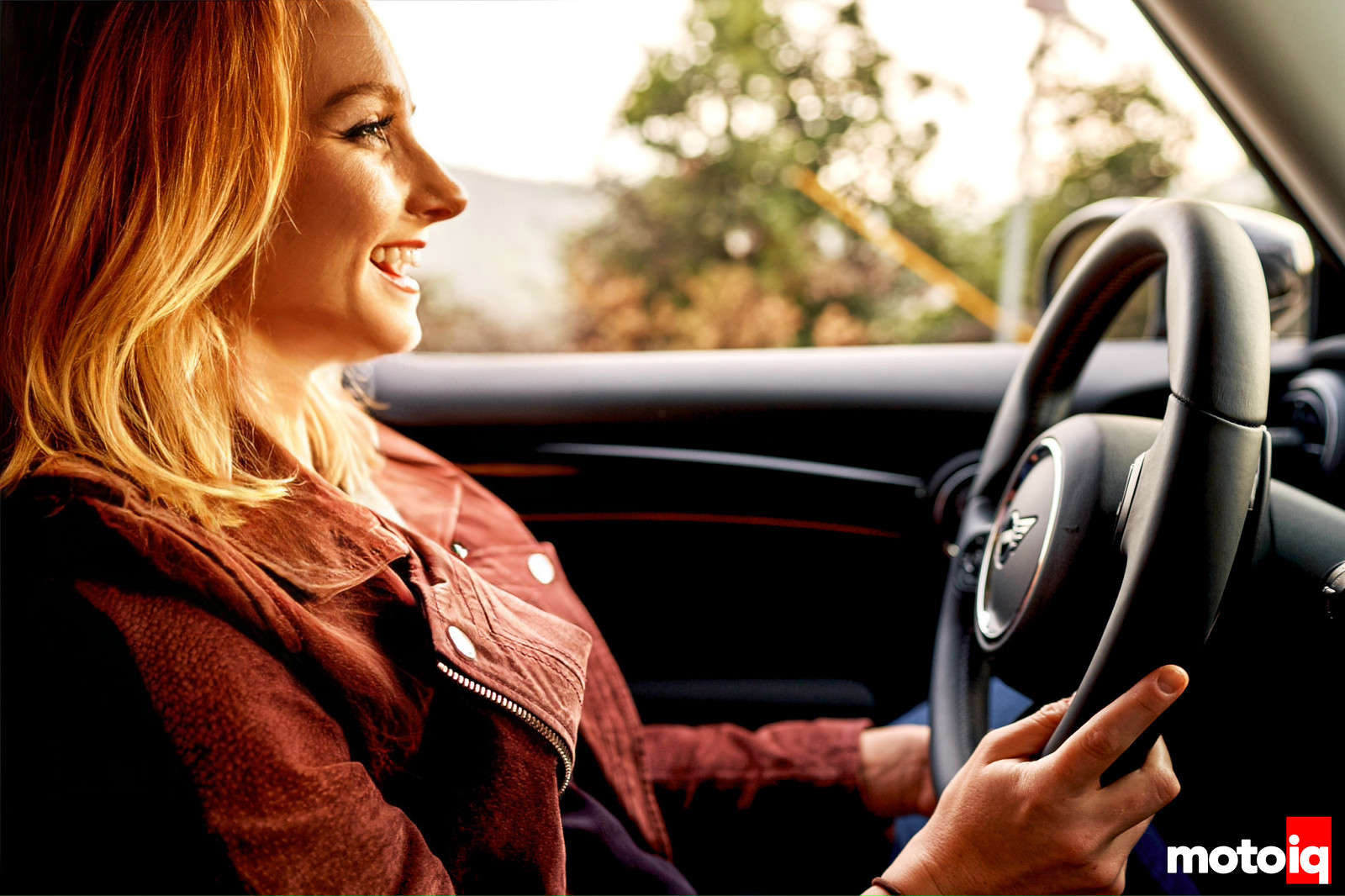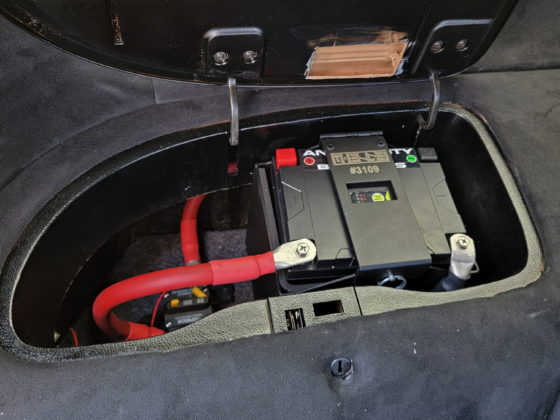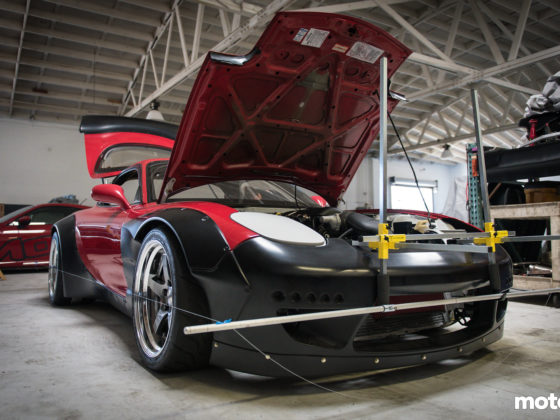
Overall, I think the design has little quirks to it that I’d assume are to be intentionally different. If I had to guess, I’d say this is the brand’s valiant attempt at trying to influence a new industry-wide shift to a few typical design patterns. I know MINI collaborated thoroughly with Icon Icar. Icon Incar is a highly specialized design consultancy for automotive user interface, user experience, connectivity, and mobility ecosystems to create some kickass UX, and the car’s unique personality definitely shines through that research.
8/10
3. User Control and Freedom
Users often perform actions by mistake. They need a clearly marked “emergency exit” to leave the unwanted action without having to go through an extended process.

So, this is an excellent time for me to mention that the Mini is a 7-speed auto-manual…and BOY do I love it. First off, I live in Los Angeles, where driving a manual transmission can be an absolute panic attack. So that’s out for me (just my personal preference), but a true automatic is too boring for me. I need mental stimulation with bumper lanes, and that’s essentially what Pebble’s drivetrain provides. She’s got paddle shifters so you can play racecar driver in manual and sport modes, upshift and downshift to your liking (or however you want to play the power band) but with the added protection of the computer coming in as backup so you don’t overrev. What can I say? The thing shifts like butter and rev matches with or without your help. She’s got it, but if you want to take over for a bit, she’s more than happy to let you play it up.
10/10
4. Consistency and Standards
Users should not have to wonder whether different words, situations, or actions mean the same thing. Follow platform and industry conventions.

I have a lot of great things to say about the instrument panel. It’s high contrast, it’s flat and light deflective, very clear and concise information…except for these damn pop-up icons that come up at all random times and disappear just as fast. These icons appear in correlation to the 3 driving modes: green, mid, and sport. Each of the 3 modes has its own subsequent set of alerts. Let’s take green, for example. Every so often, I’ll see these icons and circles pop up that I can only imagine indicating something to do with either saving gas or wasting it. Without any English subtitles underneath said iconography and the icons themselves being pretty vague illustrations, it’s really anyone’s guess as to what they’re trying to say…unless you read the manual. But that’s the point. I don’t want to have to go pick up the manual to go and decipher what my car is trying to tell me. It should be so effortless that I instantly understand what it’s telling me, and therefore what it wants me to do in order to solve the problem. I want to work with her, but I, unfortunately, don’t always know how. We’re currently working on how to better communicate.




6 comments
“In essence, the shifting experience is literally in reverse order of what most cars have.”
If by that You mean shifting gears in manual mode, in essence ALL other cars are in reverse order compared to the sequential transmission shift pattern they are trying to emulate. In my experience, the BMW order is more enjoyable.
Think of it this way: if You are pushed in the seat by the 630hp Your BMW M5 CS puts to the ground, is it easier to select the next gear by trying to push your hand forward or just stay in position and pull the shifter back?
Also, drag cars have their brake parachute deploy by pulling the lever from back to front. Because race cars need to be intuitive. Why that hasn´t trickled down to passenger cars, I can not fathom.
Thank You for the article.
Lane Assist, Front Collission Assist etc messages in newer cars also make my blood boil.
Thanks for the tip! As for that sort of micro action determination with ideal shifting direction…I think it depends on a couple of factors:
1. What shifting experience has the driver already had? Are they new to driving, and if not, what driving background do they come from?
2. A/B testing. I’d imagine this difference in preference would take slivers off process timing, but again, it would have to be tested in order to determine what’s optimal.
Really, it depends on the driver’s current state and what we have to work with around that.
Glad to hear I’m not the only one who gets triggers by some of these notifications 😂
-Em
The shift pattern comes from motorsports. If you watch old school F1, WRC, and Indycar when they still had sequential shifters, pushing forward is to downshift and pulling back is to upshift. This pattern allows the motion to follow the current direction acceleration. Modern F1 cars pull like 5Gs on the brakes, but I figure the old school ones probably still pulled 2-3Gs on the brakes. Much easier to push forward on the shifter to downshift while braking than trying to pull back against 2-3G of force. Mazda and Porsche have the same motorsports biased shift pattern 🙂 It’s a similar situation on motorcycles. The street shift pattern is one down (to go from neutral to get into first gear) and five up to work up to 6th gear. This is all fine and good on the street and it’s easier to push down to get into first gear from neutral when getting ready to leave from a stop. But the motorsports shift pattern is one up, five down. So upshifts are completed by pushing down in the shift lever while accelerating and downshifts are executed by pulling up while braking. These directions of action align with the G forces the rider will be experiencing.
I don’t have specific comments on this Mini, but speaking as someone working on race car dash/interface stuff, I think your articles are going to provide a lot of interesting food for thought. I look forwards to more!
Thank you, Dan! That’s so kind. Definitely let me know if there’s anything specific you’d want to see in future articles…I love talking to other fellow dashboard nerds 🤓
In this immediate case I’m messing with AEM CD7 stuff for a pure race car, and essentially trying to think through how to set up the main screen to have it amplify the sort of information that gets checked more often or that should be called to attention while having lower priority stuff available to be checked when there’s more time.
… which largely ended up cribbing from the C7R GTE dash layout but I do prefer to do better educated ideas than “monkey see, monkey do” 😉